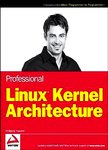版权所有:内蒙古大学图书馆 技术提供:维普资讯• 智图
内蒙古自治区呼和浩特市赛罕区大学西街235号 邮编: 010021

丛 书 名:Wrox professional guides \ Programmer to Programmer
版本说明:1
I S B N:(纸本) 9780470343432
出 版 社:Wrox
出 版 年:2008年
主 题 词:Application software Computer architecture
学科分类:08[工学] 0835[工学-软件工程] 081202[工学-计算机软件与理论] 0812[工学-计算机科学与技术(可授工学、理学学位)]
摘 要:Find an introduction to the architecture, concepts and algorithms of the Linux kernel in Professional Linux Kernel Architecture, a guide to the kernel sources and large number of connections among subsystems. Find an introduction to the relevant structures and functions exported by the kernel to userland, understand the theoretical and conceptual aspects of the Linux kernel and Unix derivatives, and gain a deeper understanding of the kernel. Learn how to reduce the vast amount of information contained in the kernel sources and obtain the skills necessary to understand the kernel *** Linux Kernel ArchitectureAs the Linux kernel constantly evolves, so must your understanding of the central functions of the kernel. Linux expert Wolfgang Mauerer focuses on version 2.6.24 (as well as summarizing changes to versions 2.6.25 and 2.6.26) of the kernel as he walks you through the concepts, underlying structures, and implementation of the Linux kernel. Keeping a close connection with the source code—as well as the components and subsystems of the kernel—this book reviews the VFS layer and discusses virtual filesystems and the Extended filesystem family and examines how the page and buffer cache speed up kernel *** ll take a look at the peculiarities of various architectures supported by the kernel, explore the assorted tools and means of working efficiently with the kernel sources, and investigate the numerous social aspects of kernel development and the Linux kernel community. Ultimately, this insightful book will serve as an indispensable step towards understanding structure and implementation of the Linux *** you will learn from this book*Various ways of viewing the kernel—as an enhanced machine, a resource manager, and a library*How the kernel handles all time-related requirements, both with low and high resolution*The mechanisms required to ensure proper operation of the kernel on multiprocessor systems*How modules add new functionality